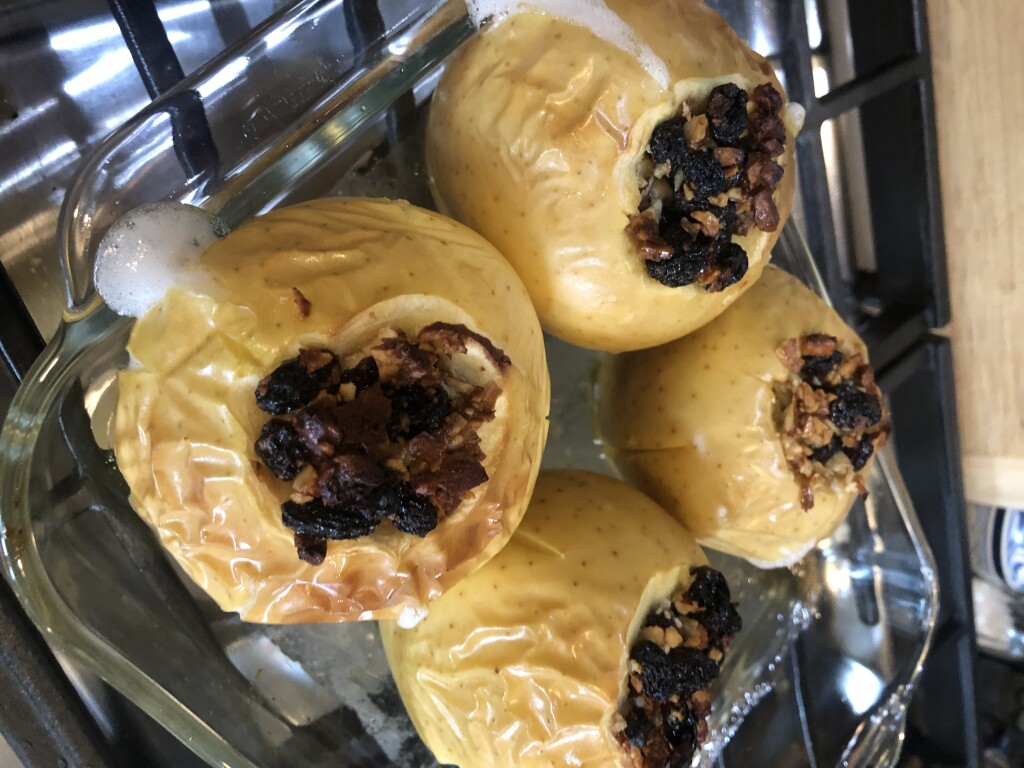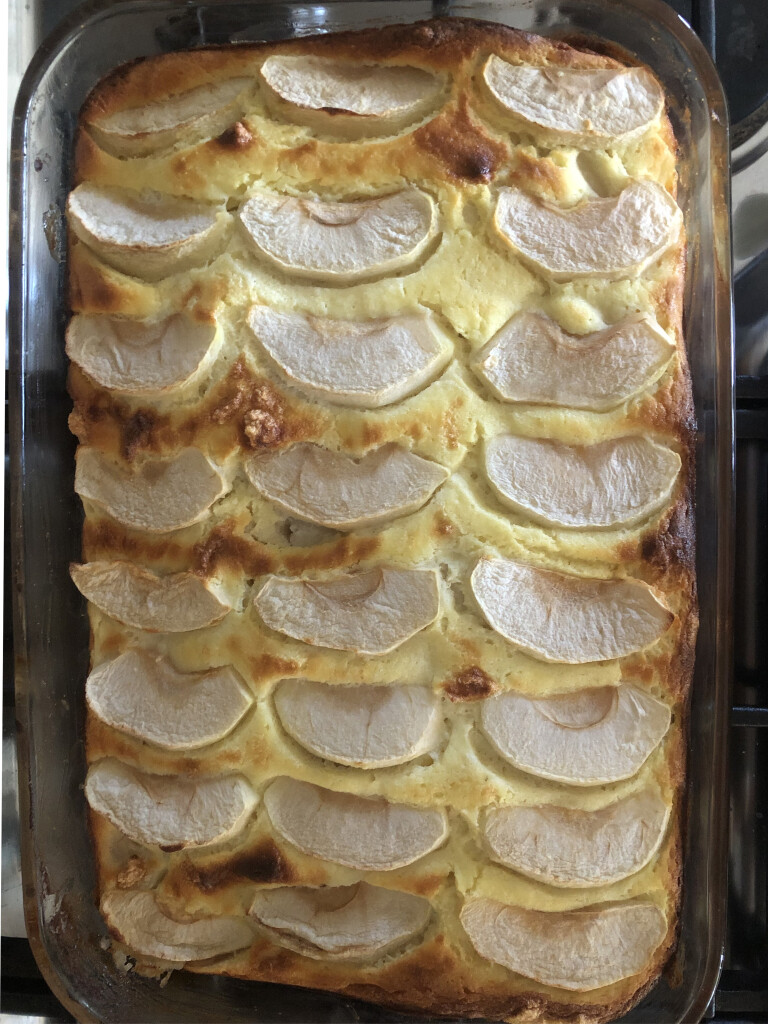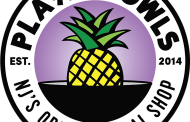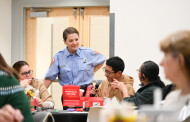Most of us can probably come up with four or five right away and maybe another four or five with a little help. And if you like apples, and who doesn’t, you probably have a couple of favorites.
Did you know that the only apples native to North America are crab apples? If you’ve ever tried one, you know that they are incredibly sour and only good for giving stomachaches and setting jams and jellies, because of their high pectin content.
The origin of the apple as we know it today started in Kazakhstan in about 6500 BC where there are still forests of apples. Over the centuries, birds and animals spread the seeds on their migrations until the Romans discovered apples along the Silk Road trade routes and in what is today Syria. Still far away and long ago. The Romans then brought trees and seeds to Britain.
With England’s perfect climate for growing apples, the British eventually cultivated over 2,000 varieties. When pilgrims left England and arrived in Plymouth, MA, they brought more apple seeds with them, which started the spread of yet another 2,500 different types of apples being grown here.
Apples are interesting in that when the seeds are planted, the fruit becomes a unique variety all its own. So, seeds planted on the East Coast, let’s say, and then cultivated, harvested and planted in Washington would develop into separate and distinct varieties. It’s easy to see then how we’ve ended up with over 7,000 varieties throughout the world.
With all these apples everywhere, why are only about 100 varieties grown commercially in the US?
Well, left to their own devices, an apple tree planted from seed will produce sour, green, maybe lumpy apples good for feeding animals or making applesauce or tasty and complex cider. What you won’t get from a wild tree is a pretty, well-shaped, firm and easy-to-ship red apple, or perfectly green granny smith. For that to happen, trees need to be grafted with branches from the trees of apples that won the genetic lottery and bore beautiful fruit naturally. Grafting was something the Romans knew and practiced, and something the pilgrims forgot or didn’t have time for. The practice reemerged sometime after John Chapman (a.k.a. Johnny Appleseed), perhaps the original journeyman nurseryman, walked through what is now Pennsylvania and Ohio planting apple trees in the 1790s and early 1800s in advance of future settlers.
Unfortunately, there are hundreds and hundreds of varieties that have been lost to our palate in favor of hard, perfect looking apples that are sturdy enough to ship, which is why, for example, you don’t see too many MacIntosh apples anymore. They are so good, but so soft and easily bruised!
We’re lucky to have great farmers’ markets and farm stands in our area, and grocery stores that stock local produce. But if you want to try really good fresh apples, you have to pick them yourself. Apples grow best at a higher altitude than here in Apex, Holly Springs, and Fuquay-Varina, and in cooler weather, so we have to travel a little to find pick-your-own orchards. The NC Apple Growers Association website (ncapplegrowers.com) lists a wide variety of apples and orchards throughout North Carolina and neighboring states. Check out their directory of orchards, many in Hendersonville, which would make for a nice weekend drive with family or friends, for some apple picking.
A little closer to home, about an hour from Apex, is Millstone Creek Orchard in Ramseur, just past Siler City, off of US 64 East. Millstone Creek has apple picking from late August through September! They offer a host of family friendly activities all year long, including seasonal baked specialties, so it might be worth visiting www.millstonecreekorchards.com to see what’s coming up.
Want more apples but even less driving? Try Perkins Orchard (www.perkinsorchard.com) in Durham where you can purchase a wide variety of picked apples from their 16 orchards across the U.S. They do not offer pick-your-own because, as their website states, “We are only 400-500 feet above sea level so high-quality apples aren’t typically available in this area, let alone for physical picking. This is the reason we have over 16 apple orchards in [Western NC and other states] to give us a variety.”
For more reading about apples, their history and variety, here are the resources used for this article.
https://88acres.com/blogs/news/all-about-apples
https://www.theorchardproject.org.uk/blog/where-do-apples-come-from/
https://cals.ncsu.edu/news/your-guide-to-north-carolina-apples/
https://www.motherjones.com/environment/2013/04/heritage-apples-john-bunker-maine/
And, because nothing says fall like apples, I hope you’ll try these delicious German recipes from my mother’s cookbook.
BAKED APPLES
Serves 4
Ingredients:
4 large apples, Golden Delicious and Boskop (see notes) are recommended
2 tablespoons of sultanas (raisins) (see notes)
2 tablespoons of peeled, finely grated almonds (see notes)
1 tablespoon of honey
1 tablespoon of butter
½ cup white wine (optional)
Instructions:
Core the apples and lightly score the skin all around with a sharp knife.
Mix the sultanas (raisins), almonds and honey and fill the apples with them.
Then place in a shallow baking dish, cover with flakes of butter, sprinkle with white wine, and place in a pre-heated oven at 392 Fahrenheit (200 Celsius).
Roast the apples for about 35 minutes and then serve hot or cold. (See notes)
Notes:
Belle de Boskop is a rustic apple that is firm, tart and fragrant.
You can pre-soak the raisins in either hot water or tea to plump them a bit more.
Don’t peel almonds – dry roast them in a pan on medium heat and dump them out onto a kitchen towel and rub the skins off.
You can wrap the apples individually in aluminum foil and bake them in the charcoal embers of the BBQ grill or campfire. The cooking time remains the same.
QUARK CASSEROLE WITH APPLES
Quark is a staple dairy product in German kitchens. Essentially milk that is warmed until soured, curdled and then strained, the resulting spread is somewhere between cheese and yogurt. Its mild flavor makes it a versatile alternative in sweet and savory recipes. For this side dish, we’re substituting whole milk plain Greek yogurt.
Ingredients:
1 ½ lbs. (750 g) apples, approximately
4 eggs
¾ cup (150 g) sugar
Zest of 1 lemon
1 packet of vanilla sugar (about 1 ½ teaspoons)
2 ½ cups (500 g) whole milk plain Greek yogurt
5/8 cup (125 g) semolina flour
1 ½ teaspoons of baking powder
Salt
A little lemon juice
Instructions:
Peel, core and quarter the apples, then slice them into thin wedges.
Put egg yolks in a mixing bowl; add sugar, lemon zest and vanilla sugar. Whisk until foamy.
Add the yogurt, semolina and baking powder and mix well.
In a separate bowl, beat the egg whites with salt and a little lemon juice until stiff, and fold into the curd cream.
Pour the mixture into a greased baking dish. Decorate top with apple slices. Place on the middle rack in the oven.
Bake at 392 Fahrenheit (200 Celsius).
Check after 35 minutes; test with a skewer or knife. If it comes out clean, it’s done.










